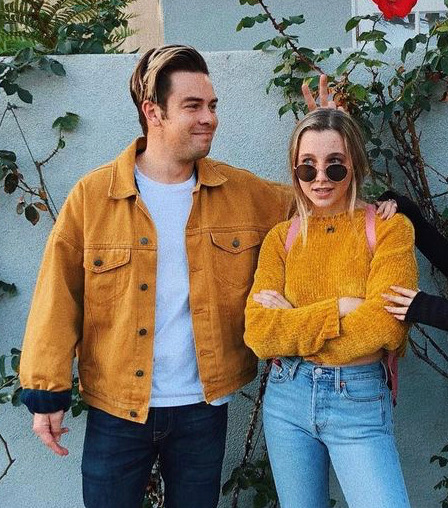Which is more influential – money or content creators?

Courtesy of @chamberlaincoffee
Oct 4, 2021
The former half of “Gen Z” has a unique experience made of a social media-less childhood combined with an adulthood where Twitter, Instagram and YouTube are practically inescapable. Whether it’s watching a YouTube video for class, scrolling through Instagram to keep up with Laker life, or mindlessly refreshing Twitter; there’s no hiding from the shadow of digital content consumption attached to our feet. The most dominant of these platforms is YouTube, which is visited by 77% of 15-25 year-olds daily in America.
What was once a platform for cheap parodies and home videos is now a multibillion-dollar company, with content creators racking up tens of millions of subscribers that account for a large portion of the aforementioned “Gen Z” viewership. When trailblazers like Smosh, Fred, and Jenna Marbles began making a living off of their videos through sponsorships and ad revenue in the early 2010s, being a “YouTuber” slowly started being viewed as a career choice as opposed to a hobby.
Flash forward to 2021 – “YouTuber” has been replaced with “influencer”, and not only is content creation a desirable career but there now seems to be an ever-growing influx of (mostly) young people with dollar signs in their eyes. From gaming, to fashion, to comedy – every niche is overflowing with content. The longevity and reputation of each influencer can falter in the blink of an eye; juggling fame, money and success is presumably challenging for one’s ego. Ex Vine star-turned-podcaster Cody Ko and the multifaceted Emma Chamberlain have both faced these gold-plated temptations – the latter with more integrity.
Cohosting one of Patreon’s most popular podcasts and successfully jumping platforms is no small feat, yet Ko conquered both with ease. The commentary comedian originally won viewers over with his abrasive, explicit reaction videos in 2017 (alongside business partner Noel Miller). Recently, despite his monetary success and high view counts, the commentator has faced backlash from fans for a decline in content quality. An editor switch resulted in a reliance on cheap effects and topic repetition. Similarly, fans have called Cody out in recent months for his abundance of sponsorships across all of his social media accounts; referring to him as a sell-out.
20-year-old Chamberlain seems to be having the opposite experience, however. Chamberlain initially rose to YouTube stardom through fast-paced vlogs, filled to the brim with quirks. Her 10.9 million subscriber count has graced her with opportunities previously exclusive to traditional celebrities: owning a coffee line (Chamberlain Coffee), participating in fashion week, and attending the Met Gala (partnered with Vogue and Louis Vuitton). Unlike Ko, Chamberlain has taken more control over her content in conjunction with career growth; editing her own videos and connecting with viewers in a more vulnerable state on her podcast.
It’s difficult to criticize others regarding opportunities and incomes I’ve never experienced, but it is admittedly disheartening to see content creators I once admired “sell-out” from a viewer’s perspective. An important acknowledgment to make is that the two are comparable in the grand scheme of influencer culture, but by no means is Ko the internet’s biggest sell-out, nor is Chamberlain exempt from criticism. In an industry powered by money and surrounded by uncertainty, however, the millions of eyes analyzing one’s every move should place audience approval at the forefront.





















